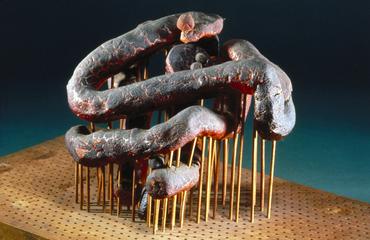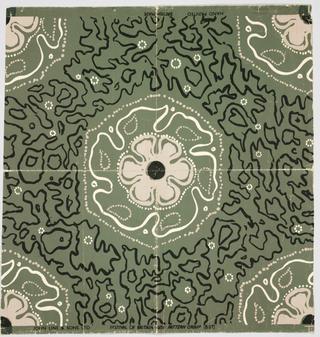
Model of the periodic system of de Chancourtois
- Made:
- 1925; 1862 in France and South Kensington




Model demonstrating the telluric screw periodic system of Alexander-Emile Beguyer de Chancourtois proposed in a paper published in 1862.
This model, made by the Science Museum in 1925, provides a rare physical realisation of arguably the earliest periodic system of for the elements. It was devised by the French geologist, Alexander-Emile Beguyer de Chancourtois in 1862, 7 years prior to Dmitri Mendeleev's periodic table.
De Chancourtois arranged the elements in the order of their atomic weights along a helix which was traced on the surface of a vertical cylinder, with an angle of 45 degrees to its axis. The base of the cylinder was divided into 16 equal parts (the atomic weight of oxygen), and the lengths of the spiral corresponding to the weights of the elements were found by taking the one-sixteenth part of a complete turn as a unit. It is seen that analogous elements fall on approximately the same perpendicular. Tellurium was situated at the centre, prompting the name "vis tellurique", or "telluric screw".
Look closer
Model demostrating telluric screwDetails
- Category:
- Experimental Chemistry
- Object Number:
- 1925-647
- Materials:
- wood (unidentified) and glass
- type:
- model
- access:
- 1 - No restrictions




